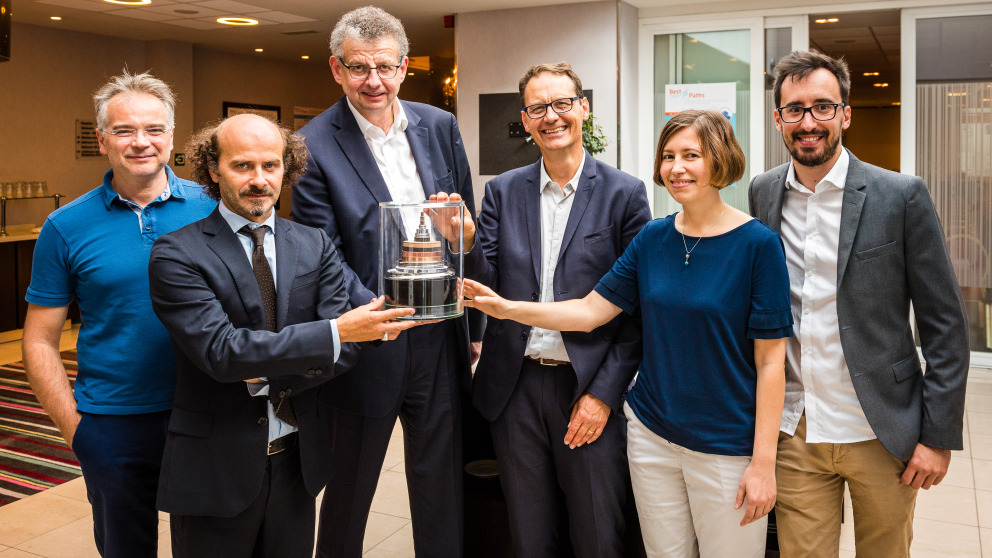Superconducting Cables: Recommendations for Deployment of New Technology
27.09.2018
A small footprint, more capacity and no losses - these are the main advantages of superconducting links for electricity transmission compared to conventional solutions. Together with the French cable manufacturer Nexans and eight other partners, the Institute for Advanced Sustainability Studies (IASS) has developed a 3-gigawatt-class superconducting cable for very high power transmission. But how far is this new technology from deployment? Experts from the energy sector discussed the hurdles and chances last week at the final conference of the EU project Best Paths in Brussels.

“We have shown that superconducting links are cost-competitive, especially when it comes to high-power applications of several hundreds of kilometres”, said Adela Marian, project coordinator at the IASS in Potsdam. “To accelerate deployment, we are now calling on policymakers to financially incentivise this new technology.”
Taking into consideration the requirements for future grid integration, the partners designed a 30-metre high-voltage testing loop. The final set-up, just completed this month, includes two electrical terminations that enable the loop to be connected to the electricity grid. The cable was developed using the superconducting material magnesium diboride (MgB2), which is economical to produce and able to carry 500 times more electricity than copper. The cable can transport up to 3.2 GW of electricity – equivalent to the output of three power plants.
At the event, grid operators and European policymakers were curious to learn more about this new technology, which a panellist described as a “new animal in the zoo”. In fact, most of the international research in energy transport – including research conducted within the context of Best Paths – still concentrates on the modernization and upgrading of existing overhead lines or the development of new resistive, underground cables.
“A few years ago someone told me that superconducting links are just a researcher’s dream. Much has changed since then. I really appreciate that the demonstration project has brought this into reality while taking into account the requirements of the transmission system operators”, said Norela Constantinescu, Lead Research and Innovation at ENTSO-E, the European Network of Transmission System Operators, which represents 43 TSOs from 36 countries.
To disseminate the results to broader audiences, the partners of the demonstration project drafted a white paper on high-power superconducting links, which will be made available to the public soon. The paper gives an overview on the technical details of the prototype and its key environmental benefits, and outlines next steps for its integration in existing grids. These include industrial standardization procedures as well as suggestions for suitable applications.
Additionally, the Best Paths consortium as a whole issued a set of recommendations for policymakers and industry, aimed to facilitate the deployment of all the grid technologies that have been developed within the four-year project.
Best Paths has been the largest research project in the energy field financed under the European Union’s 7th Framework Programme for Research, Technological Development and Demonstration (FP7) for research and technological development. The project ends in September 2018, having united 38 partners around five large-scale demonstrations to validate the technical feasibility, costs, impacts and benefits of the tested grid technologies. The focus of the demonstrations has been to deliver solutions for the transition from High Voltage Direct Current (HVDC) lines to HVDC grids, upgrading and repowering existing Alternating Current (AC) parts of the network, and to integrate superconducting high power DC links within an AC meshed network.
The key findings of the Best Paths project as well as the pictures and presentations from the final conference can be found at: www.bestpaths-project.eu
More information:
- Marian, A., Bruzek, C.-E. (2018): Advancing superconducting links for very high power transmission.
Contact

